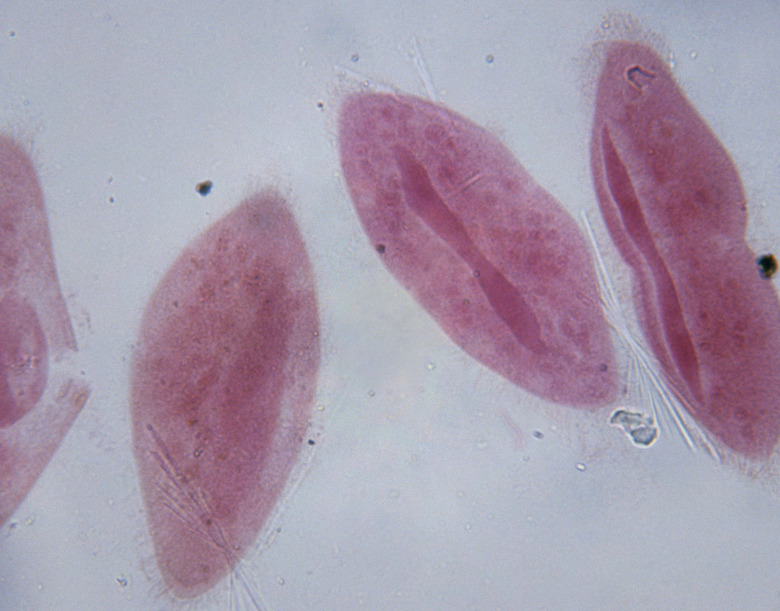Can Eukaryotes Survive Without Mitochondria?
Biologists divide all life on Earth into three domains: bacteria, archaea and eukarya. Bacteria and archaea both consist of single cells that have no nucleus and no internal membrane-bound organelles. Eukarya are all the organisms whose cells contain a nucleus and other internal membrane-bound organelles. Eukaryotes are also known for having a specialized organelle called the mitochondria. Mitochondria are such a common feature of most eukaryotes that many people overlook those few eukaryotes that lack mitochondria.
What are Eukaryotes?
What are Eukaryotes?
A single eukaryotic cell consists of a gel-like aqueous cytoplasm in which a globular nuclear membrane holds the DNA, and membrane-bound compartments separate other working areas of the cell. Nearly all eukaryotes contain an organelle called the mitochondrion. Mitochondria contain their own DNA and use their own protein-synthesis machinery — completely independent of the machinery of the rest of the cell. The accepted view is that a bacterium invaded an archaean many hundreds of millions of years ago. The relationship evolved into a symbiotic one. The bacteria are now known as mitochondria, and the combination evolved into most of the known eukaryotic organisms.
The Function of Mitochondria
The Function of Mitochondria
Mitochondria are the primary energy-generating sites in most eukaryotic cells. They're critical for a process called aerobic cellular respiration. Cellular respiration is a process in which cells split up organic molecules and store the energy they extract in molecules called adenosine triphosphate, or ATP. This can be done without oxygen, in which case it's called anaerobic respiration. But if oxygen is present, most eukaryotic cells and some prokaryotic cells can generate many more ATP molecules using the process of aerobic cellular respiration. In eukaryotes, this process takes place within the mitochondria. In aerobic prokaryotes, this process takes place at the cell membrane.
Energy From Glucose
Energy From Glucose
Many eukaryotic cells get the bulk of their energy from glucose. The first step is to split glucose in two equal parts. That step is called glycolysis. Glycolysis occurs in the cytoplasm and it generates a little bit of energy for the cell. The next step in energy production depends upon the specific type of cell and the instantaneous environment inside the cell. If oxygen levels are low, eukaryotic cells can fall back on anaerobic cellular respiration — specifically, a process called fermentation, which uses the products of glycolysis to produce a bit more energy and leaves a compound called lactic acid. Human muscle cells do this when the demand for energy from muscles outpaces the rate at which oxygen is taken in. When sufficient levels of oxygen are present, humans and other eukaryotic organisms take advantage of the greater amount of energy they can get from using the products of glycolysis to complete aerobic respiration in the mitochondria.
Amitochondriate Eukaryotes
Amitochondriate Eukaryotes
Eukaryotes that use oxygen to optimize their energy production could not survive if their mitochondria were taken away. But there are eukaryotes that have no mitochondria, called amitochondriate eukaryotes. Since they have no mitochondria to complete aerobic respiration, all amitochondriate eukaryotes are anaerobic. Intestinal parasite Giardia lamblia, for example, is anaerobic and has no mitochondria. Some other amitochondriates are Glugea plecoglossi, Trichomonas tenax, Cryptosporidium parvum, and Entamoeba histolytica. There is some question concerning the origin of these organisms: did they lose the mitochondria they once had, or are they descendants of the earliest eukaryotes from before the fusion with mitochondria? Differing phylogenetic relationships between amitochondriates and other eukaryotes have been proposed, but there is no single accepted explanation at this time.
References
- Biology Bulletin; Phylogenetic Position of Amitochondriate Protists in the Evolution of Eukaryotes
- University of Washington: The Advent of the Eukaryotic Cell
- Variation and Evolution in Plants and Microorganisms: Chapter 3 — The Chimeric Eukaryote: Origin of the Nucleus from the Karyomastigont in Amitochondriate Protists
- Indiana University – Purdue University at Indianapolis: A theory on the Origins of Eukaryotic Cells: Mitochondria and Chloroplasts
Cite This Article
MLA
Gaughan, Richard. "Can Eukaryotes Survive Without Mitochondria?" sciencing.com, https://www.sciencing.com/can-eukaryotes-survive-mitochondria-20215/. 24 April 2017.
APA
Gaughan, Richard. (2017, April 24). Can Eukaryotes Survive Without Mitochondria?. sciencing.com. Retrieved from https://www.sciencing.com/can-eukaryotes-survive-mitochondria-20215/
Chicago
Gaughan, Richard. Can Eukaryotes Survive Without Mitochondria? last modified March 24, 2022. https://www.sciencing.com/can-eukaryotes-survive-mitochondria-20215/
